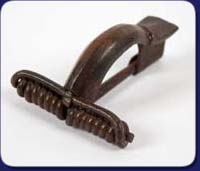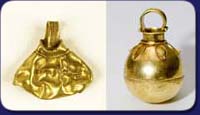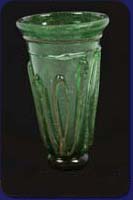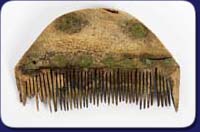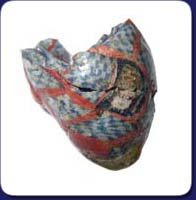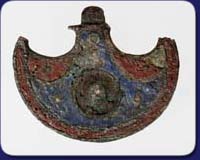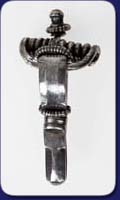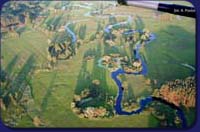|
The river meanders within a broad valley, passing in its lower course through the relics of the ancient Forest of Kamieniec. In late antiquity, between 2nd century BC and early 5th century AD, Liwiec was an axis of an important settlement centre of a Germanic tribe, one of many which at the time inhabited much of the territory of modern Poland. Sandy dunes stretching along the edge of the valley and along the river itself over much of the year were convenient for travel and the light soils and numerous small streams created an excellent environment for the development of economy based on farming.
Archaeological interest in prehistoric settlement in the valley of the Liwiec reaches back to the second half of the 19th century. The first finds from sites dated to the turn of the era found their way into private collections and subsequently into museums, mainly the archaeology section of the Museum of Industry and Agriculture (for example, from sites at Raźny, Grębków and Jarnice; a great hoard of Roman denarii from the 1st–2nd century AD discovered in 1873 near Jarnice was added to a Russian collection and presumably was lost. In late 1880s excavations at Popielów and Stawiska were run by Tymoteusz Łuniewski (1847–1905), landowner and entrepreneur from Korytnica, and at the same time, enthusiastic archaeologist and ethnographer who started to publish the results of his studies in volume 4 of Wiadomości Archeologiczne journal of archaeology as early as 1882. During the first decade of the twentieth century the area was visited, as part of his ‘archaeology field trips’, by Roman Jakimowicz (1889–1951) who later organised the State Archaeological Museum in Warsaw and was its first Director; he cooperated with Stanisław Małkowski (1889–1962), geologist living at Wola Korytnicka, the future founder and Director of the Earth Science Museum in Warsaw.
During the 1960s the State Archaeological Museum in Warsaw initiated
a wide-scale programme of investigation of late antique sites in the valley of the Liwiec which has continued to this day. At first, research tended to concentrate on the middle Liwiec – at this time, Teresa Dąbrowska excavated an extensive but largely destroyed cemetery at Karczewiec, revived work at a gravefield at Stara Wieś (recorded and partly excavated in 1941) and inspected the cemetery at Kopcie as part of a rescue excavation. During the 1970s and 80s the focus of archaeological investigations shifted to the area near Kamieńczyk.
A large and well preserved gravefield near that village, one of the most important archaeological sites dating from the beginning of our era, was excavated by Teresa Dąbrowska; Jacek Andrzejowski investigated
a largely intact cemetery at Nadkole and completed work at a second gravefield in the same village first explored by Anna Pozarzycka, whereas Grażyna Orlińska investigated an extremely interesting centre of pottery manufacture at Kamieńczyk-Błonie.
The newest research project of the State Archaeological Museum developed on the Liwiec is associated with Jartypory. Starting from 1998 a team from the Department of the Iron Age led by Jacek Andrzejowski continues to excavate a great and extremely interesting cemetery which went out of use only in early 5th century AD during the period of waning Germanic settlement on the Liwiec and on territory of Poland in general. Results of this work, which has yielded some really spectacular finds, have furthered our understanding of the fascinating world of culture of tribes which lived in this area almost twenty centuries ago, but also, have posed new questions to archaeologists opening a new chapter in the study of ancient history of the lands on the Liwiec river.
(Jacek Andrzejowski)
|
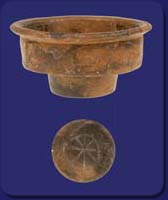

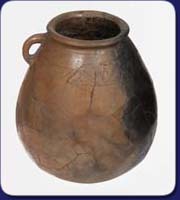
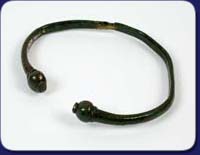
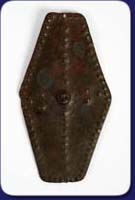
|
